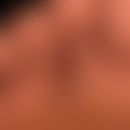Synonym(s)
DefinitionThis section has been translated automatically.
Chronic, therapy-resistant leishmaniasis of the skin and adjacent mucous membranes due to lympho- or hematogenic spread of the pathogens. It is possible that mucosal involvement is triggered or promoted by immunosuppression. The mucosal lesions occur during the cutaneous symptomatology or after a clinical interval of several years.
PathogenThis section has been translated automatically.
Frequently isolated pathogens of mucocutaneous leishmaniasis (see Leishmania):
Leishmania brasiliensis (see also South American leishmaniasis).
Leishmania mexicana, L.braziliensis, L.amazonensis, L. peruvia, L.panamensis. See also South American leishmaniasis with the different clinical variants).
Occasionally, mucocutaneous leishmaniasis can also occur in the Old World. It is then transmitted by L. infantum, L. tropica and L. major. In these cases there is usually an immunosuppressive condition (immunosuppressive therapeutics, HIV, etc.).
Vectors: Leishmania are transmitted by sand flies, in the Old World by Phlebotomus spp. and in the New World by Lutzomyia species. Sand flies live in dark and damp places and can only move 20-50 m away from their breeding site in the biotope. New World sandflies do not fly very high and therefore usually bite their victims close to the ground (e.g. lower legs). Due to their biological adaptability, they are widespread in tropics, subtropics, deserts, rainforests and plateaus. If uninfected sand flies bite an infectious host, the amastigotes are ingested during bloodsucking and transformed into a flagellated promastigote in the mosquito. After division, this enters the proboscis of the insect. If the mosquito bites again, the pathogen enters the new organism. There, the promastigote pathogen is again taken up by phagocytizing cells, in which the transformation (metamorphosis) into the amastigote form takes place. After intracellular replication, the Leishmania are released with rupture of the host cells (Fischer T et al. 2024).
You might also be interested in
PathophysiologyThis section has been translated automatically.
As soon as a person is infected, the T-cell-dependent immune response takes effect. Patients present with a strong Th1 response characterized by type IV hyperreactivity and high interferon-gamma expression. This is followed by a strong activation of macrophages, which produce reactive oxygen species and nitric oxide. Leishmania are thus attacked and killed. On the other hand, however, there are patients in whom this T-cell reactivity is reduced or completely absent. Instead, they react with a high humoral immune response, with high antibody levels, but are unable to control the parasite load. Mucocutaneous leishmaniasis develops via an "incompetent" excessive T cell reaction with increased formation of CD8+ T cells. These have a cytolytic profile and lyse infected cells without killing the parasites, which leads to increased inflammation and a more severe course of the disease. The result is massive tissue destruction with clinically detectable defects. In this respect, the control of these pathogenic CD8+ T cells or the downstream inflammatory mediators induced by them would be a new approach for the immunotherapy of leishmaniasis. There is currently no vaccine against Leishmania. One obstacle is that the most effective T cells are short-lived effector T cells (Scott P et al. 2016).
ClinicThis section has been translated automatically.
Often epistaxis (due to the early involvement of the nasal septum) is the first clinical sign of mucocutaneous progression of the disease. First skin lesions are found between the upper lip and the nasal septum. Initially recurrent, later persistent swelling of the lips and nose occurs, which becomes fibrous over the course of months. Noticeable are bulging, hardened upper lips (facies leishmaniotica); redness and bulging swellings of the tip of the nose (tapir nose).
In the primary ulcerative form of mucocutaneous leishmaniasis (also known as espundia) there is rapid tissue destruction with rapid destruction of the nasal septum and deformation of the nose; destruction of the upper lip possible.
The destruction can spread to the nasopharynx with destruction of the palate and tongue. Involvement of the larynx, pharynx and trachea lead to complicating secondary processes such as hoarseness, difficulty swallowing, obstruction of the upper airways. Cause of death is often an aspiration pneumonia.
Internal therapyThis section has been translated automatically.
- Antimony preparations (antimony = stibium = Sb/sodium stibogluconate): Generally the drug of choice for infections with Leishmania brasiliensis! Sodium stibogluconate (e.g. Pentostam®) contains 10% stibium (100 mg/ml); meglumine antimonate (e.g. Glucantime) contains 8.5% stibium (85 mg/ml). Dosage: 20 mg/kg bw/day i.m. (painful) or slowly (10-20 min.) via small caliber needle i.v. Caution! Venous thrombosis! When administered i.v., the drug should be dissolved in 50 ml 5% glucose. Duration of therapy: 20 days for cutaneous forms and 28-30 days for mucocutaneous forms. If toxic side effects occur, reduce dose by 2 mg/kg bw Sb. Clinical healing often only occurs 4-6 weeks after the end of treatment. Individual uncomplicated leishmaniasis lesions can also be treated intralesionally (apply 1-3 ml of the undiluted solution from the edge into the lesion! Carry out the procedure 1-2 times/week. Duration of treatment: 3-6 weeks, depending on how acute the lesion is. Caution! Painfulness, toxicity for heart and liver!
- Pentamidine diisethionate (e.g. Pentacarinat®): Therapy of choice for diffuse cutaneous leishmaniasis and in case of treatment failure of mucocutaneous forms. Dosage: 4 mg/kg bw/day i.m. once/week for at least 4 months. Recent studies have also shown efficacy in cutaneous leishmaniasis at a low dosage of 2 mg/kg i.m. every 2nd day up to a total of 7 injections.
- Liposomal amphotericin B (e.g. Ambisome®): Drug of 2nd choice if pentavalent antimony is contraindicated or ineffective. ED: 0.5-1.0 mg/kg bw, every 2nd day, 20 doses in total.
- Ketoconazole (e.g. Nizoral): Drug of choice for infection by Leishmania mexicana, Leishmania panamensis and Leishmania major. Not or insufficiently effective against Leishmania brasiliensis, Leishmania tropica and Leishmania aethiopica. Dosage: 600 mg/day (evening) for 4 weeks.
- Fluconazole (e.g. Diflucan®): Very effective in studies for infection with L. major. Dosage: 200 mg p.o. once/day for 6 weeks
- Miltefosine (Impavido®): Adults and children from 3 years of age: 1.5-2.5 mg/kg bw/day for 28 days. Max. TD: 150 mg. Immunocompromised patients (HIV-infected) may require longer treatment. The therapeutic successes in cutaneous leishmaniasis of the New World are also promising. Approval for this indication has been applied for in Pakistan and Colombia. Recent reports indicate that miltefosine can also be used successfully in cutaneous L. of the Old World.
LiteratureThis section has been translated automatically.
- Boggild AK et al. (2019) Cutaneous and Mucocutaneous Leishmaniasis in Travelers and Migrants: A 20-year GeoSentinel Surveillance Network Analysis. J Travel Med pii: taz055.
Fischer T et al. (2024)Treatment of mucocutaneous leishmaniasis- a systematic review. JDDG 22:763-774
- Handler MZ et al. (2015) Cutaneous and mucocutaneous leishmaniasis: Clinical perspectives. J Am Acad Dermatol 73:897-908; quiz 909-10.
- Handler MZ et al. (2015) Cutaneous and mucocutaneous leishmaniasis: Differential diagnosis, diagnosis, histopathology, and management.J Am Acad Dermatol 73:911-926; 927-928.
Scott P et al. (2016) Cutaneous leishmaniasis: immune responses in protection and pathogenesis. Nat Rev Immunol 16:581-592.
- Tejura N et al. (2019) Case Report: Mucocutaneous Leishmaniasis Masquerading as Idiopathic Midline Granulomatous Disease. Am J Trop Med Hyg 101:1107-1110.
Disclaimer
Please ask your physician for a reliable diagnosis. This website is only meant as a reference.






